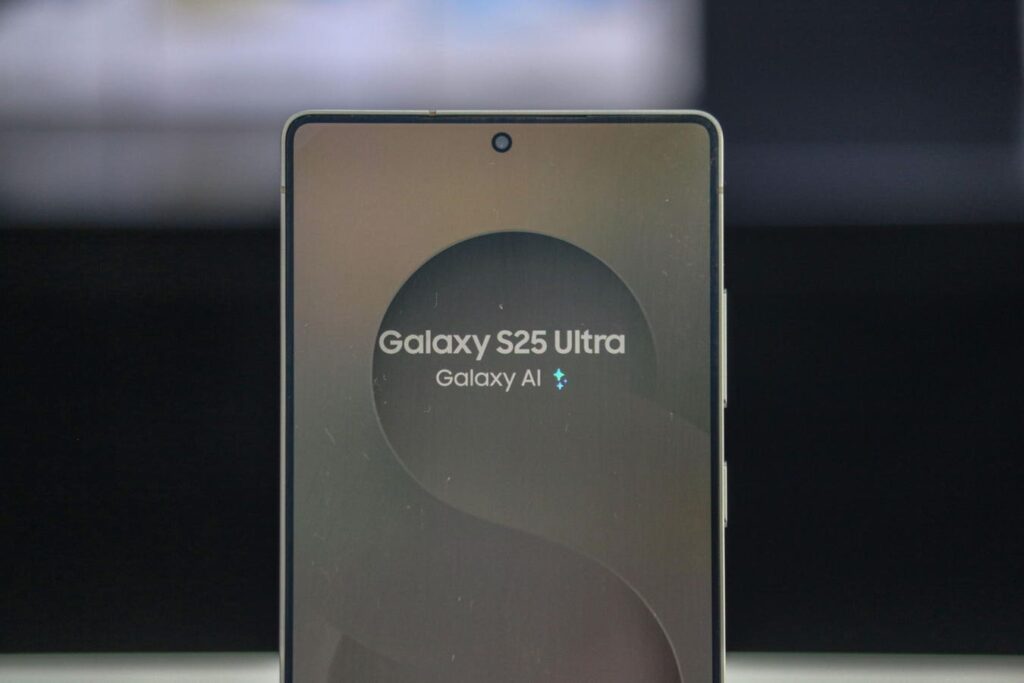
In a surprising design shift, the upcoming Samsung Galaxy S26 Ultra is rumored to feature an enlarged front camera punch hole, a move that could redefine the smartphone’s selfie capabilities. The change aims to offer a wider field of view, enhancing group selfies and capturing more of the surrounding scene. However, this decision may not sit well with users hoping for a competitor to Apple’s iPhone 17 Center Stage camera.
The announcement comes as a result of a leak from the well-known insider Ice Universe, who revealed that the Galaxy S26 Ultra will sport a larger front camera punch hole than any previous Samsung Ultra model. This alteration is expected to impact the full-screen experience, potentially affecting activities like gaming or movie playback.
Galaxy S26 Ultra’s Front Camera: A Bigger Punch Hole
Samsung’s decision to increase the size of the punch hole is reportedly intended to accommodate a wider field of view in the S26 Ultra’s front camera. The switch from a 26mm lens to a 23mm equivalent, while seemingly minor, promises noticeable differences in close-up selfie shots, as demonstrated by Ice Universe in simulated images. However, wider lenses can also lead to more distorted images, particularly when used up close.
Despite the changes, the S26 Ultra’s front camera will retain the same sensor as the Galaxy S25 Ultra. Any improvements in image quality would thus rely on enhancements to the optics or the image processing pipeline. This might be a letdown for potential customers, especially given the fierce competition from Apple’s iPhone 17, which boasts a unique square-sensored 18-megapixel Center Stage camera capable of automatic AI-powered reframing and seamless orientation shifts.
Comparing Samsung and Apple’s Camera Innovations
While the wider field of view on the S26 Ultra’s front camera could offer increased flexibility in cropping and digital zoom, it remains uncertain whether Samsung can challenge Apple’s camera prowess with mere lens adjustments and processing upgrades. To truly rival Apple’s offerings, Samsung would need to introduce groundbreaking features with tangible benefits, not just incremental quality improvements.
Even before its official launch, the Galaxy S26 Ultra’s camera hardware appears somewhat outdated compared to Apple’s innovations, highlighting a growing gap in innovation between the two tech giants. As Apple continues to push the boundaries with its camera technology, Samsung’s approach seems more conservative, focusing on gradual enhancements rather than revolutionary changes.
Future of Smartphone Camera Technology
The November 14 update reveals contrasting approaches between Samsung and Apple. While Samsung’s Galaxy S26 Ultra is expected to feature the largest front punch hole on a Galaxy S phone, Apple’s iPhone 18 series is anticipated to further widen the technology gap by reducing the size of the Dynamic Island and increasing the Center Stage camera’s resolution from 18 megapixels to 24.
Both companies are working towards notch-free displays with high-quality under-display cameras. Apple is expected to debut its first such device in its 2026 foldable lineup, while Samsung’s Galaxy Z Fold series has opted for a more traditional punch-hole camera, albeit with improved picture quality.
As rear cameras continue to meet most users’ needs, the front-facing “selfie” camera is emerging as the new battleground for smartphone camera supremacy. This competition extends beyond image quality to include features and the ability to maintain an uninterrupted display. Any perceived regressions in these areas are unlikely to be well received by consumers.
With the smartphone market evolving rapidly, the decisions made by industry leaders like Samsung and Apple will shape the future of mobile photography. As both companies strive to outdo each other, consumers can expect continued advancements in camera technology, promising exciting developments in the years to come.







